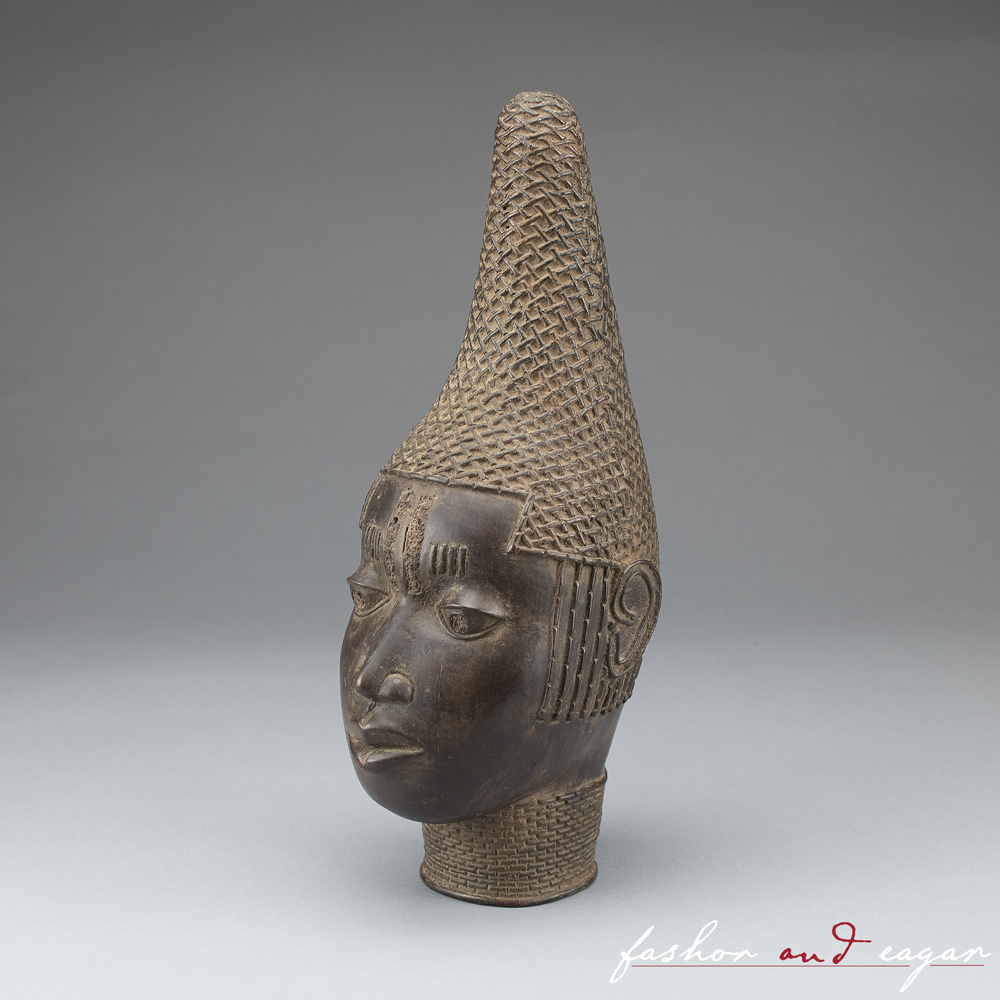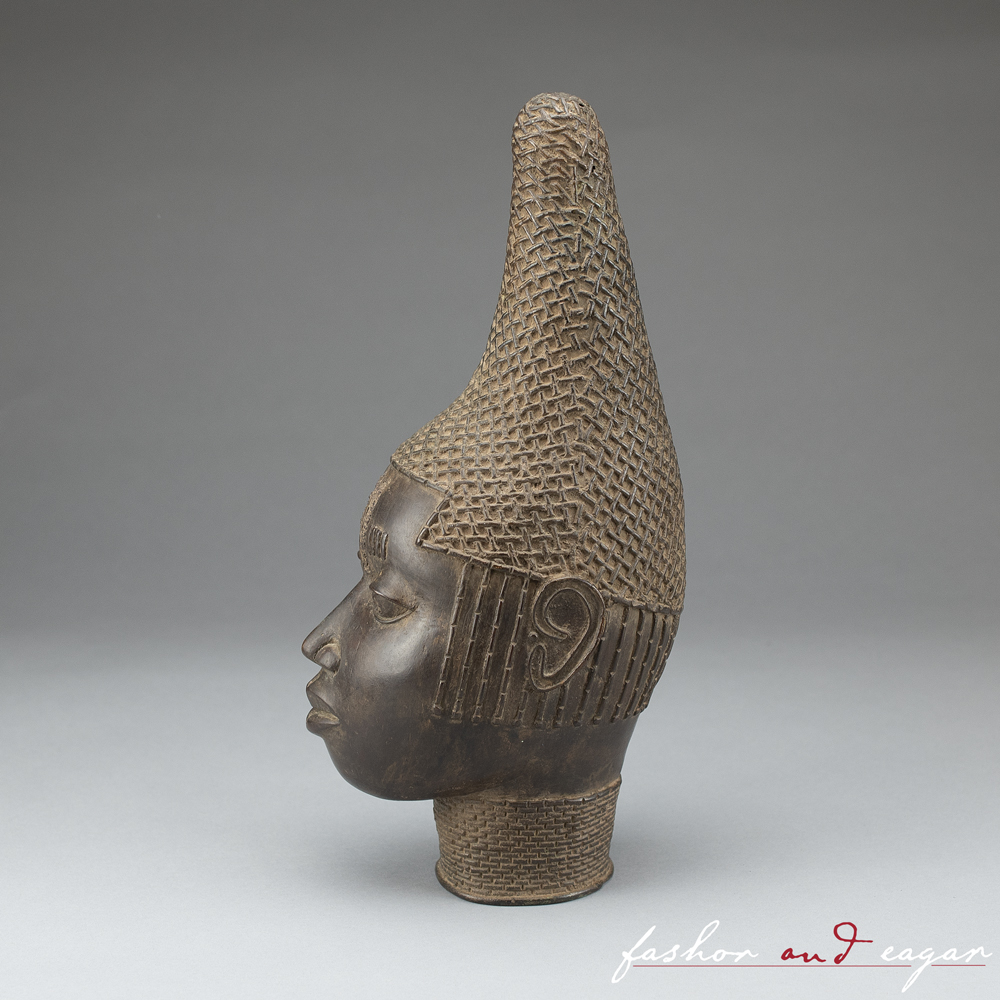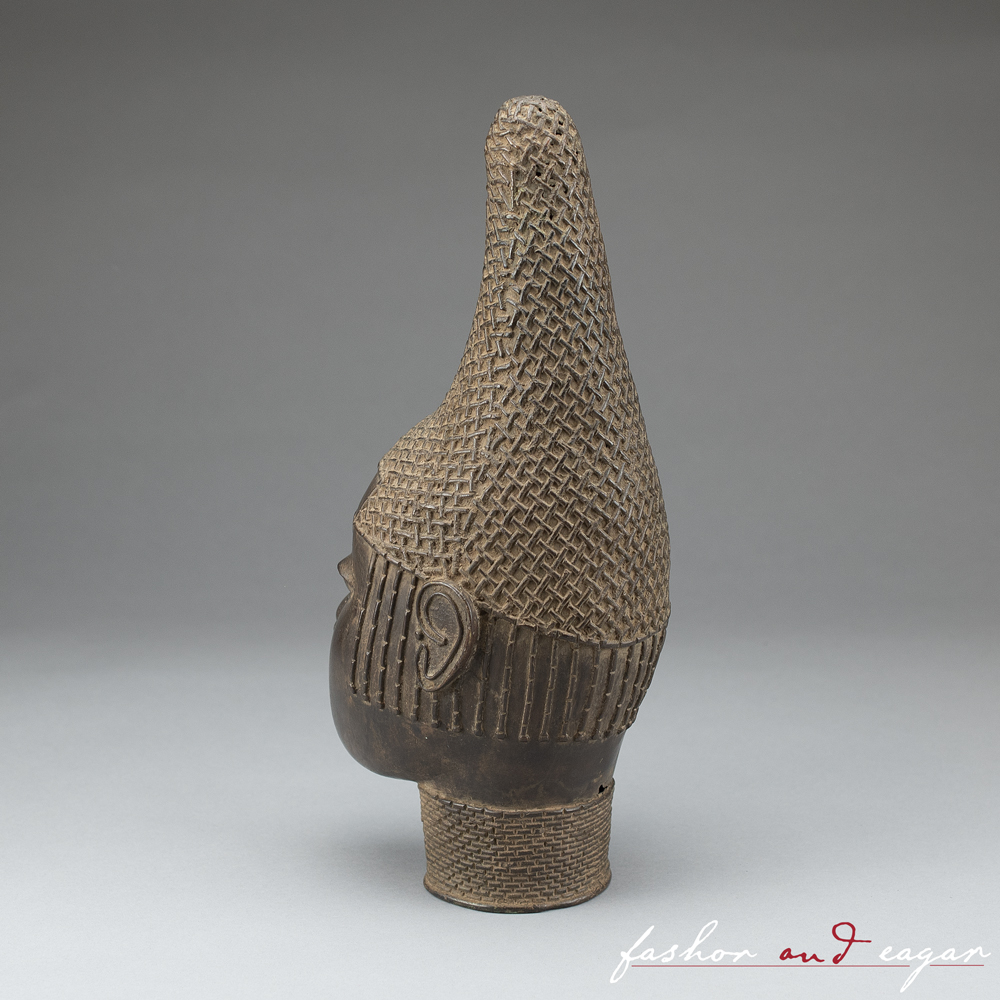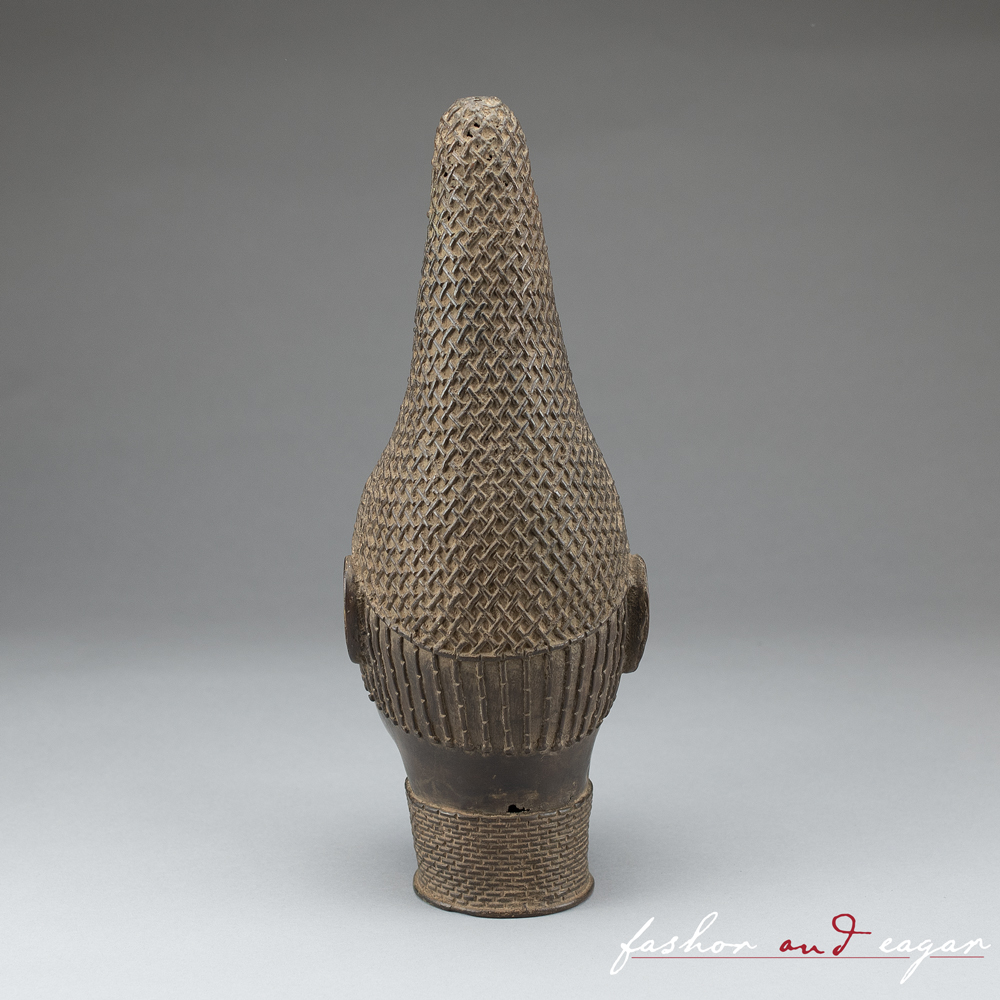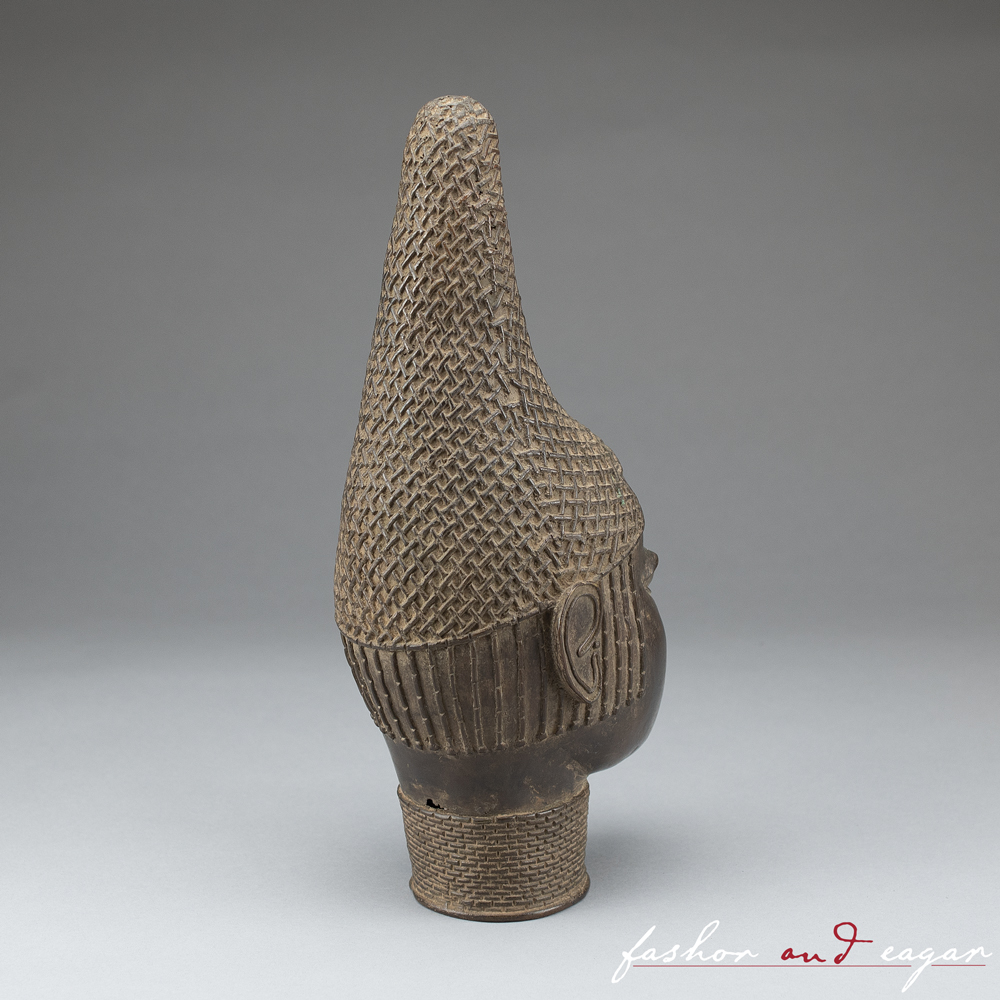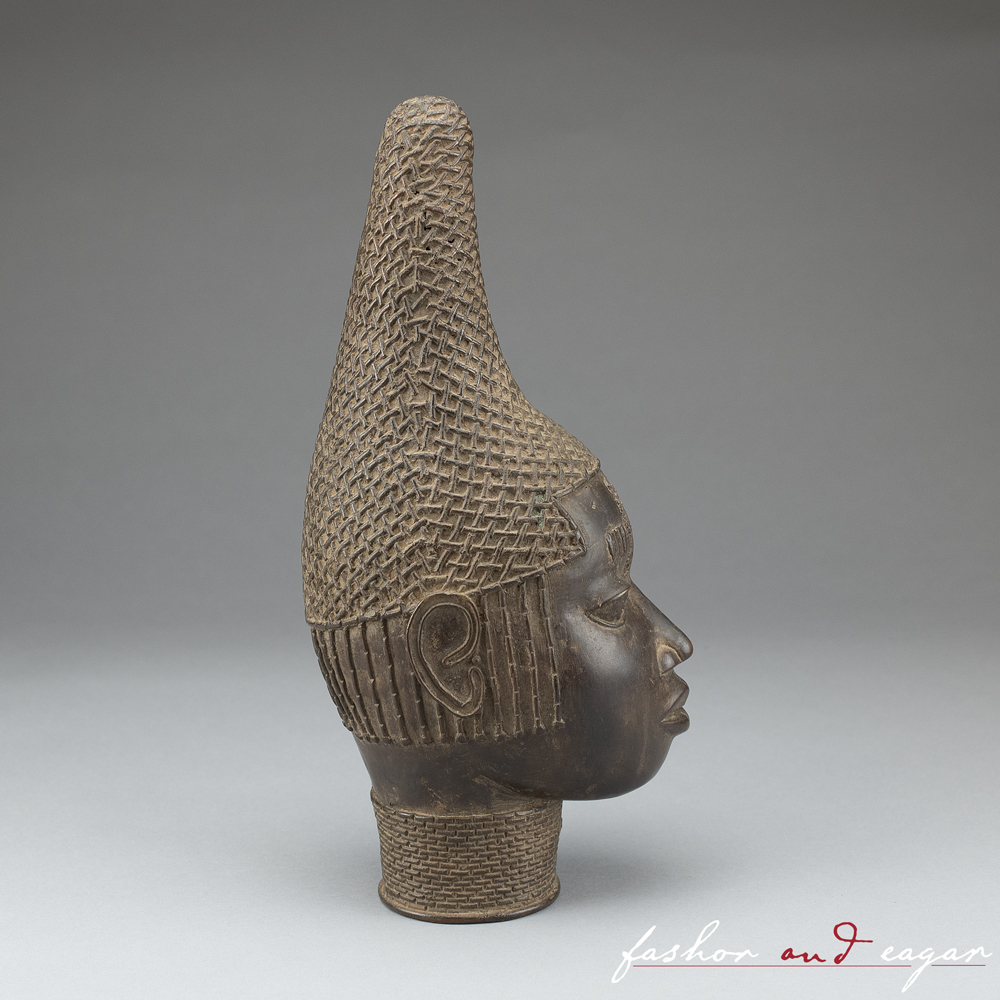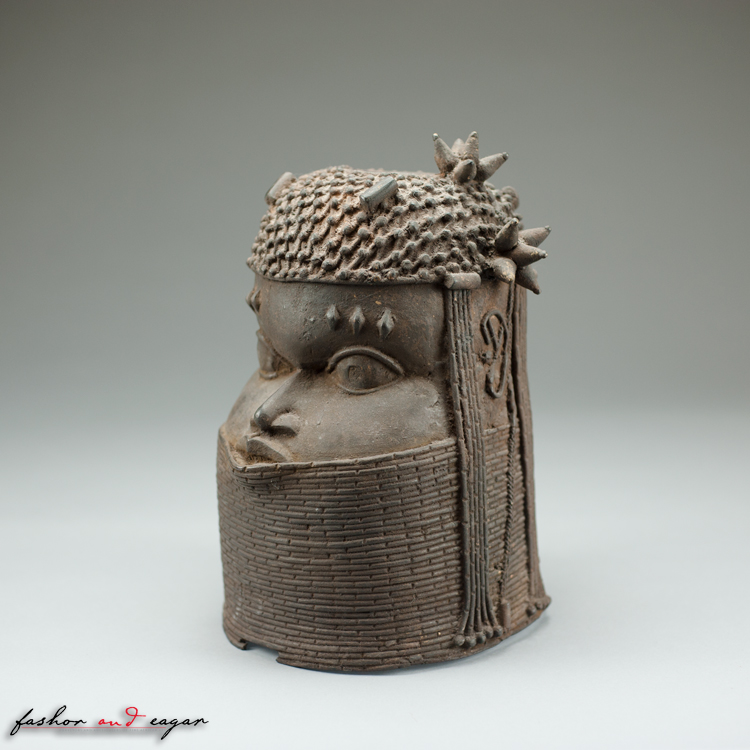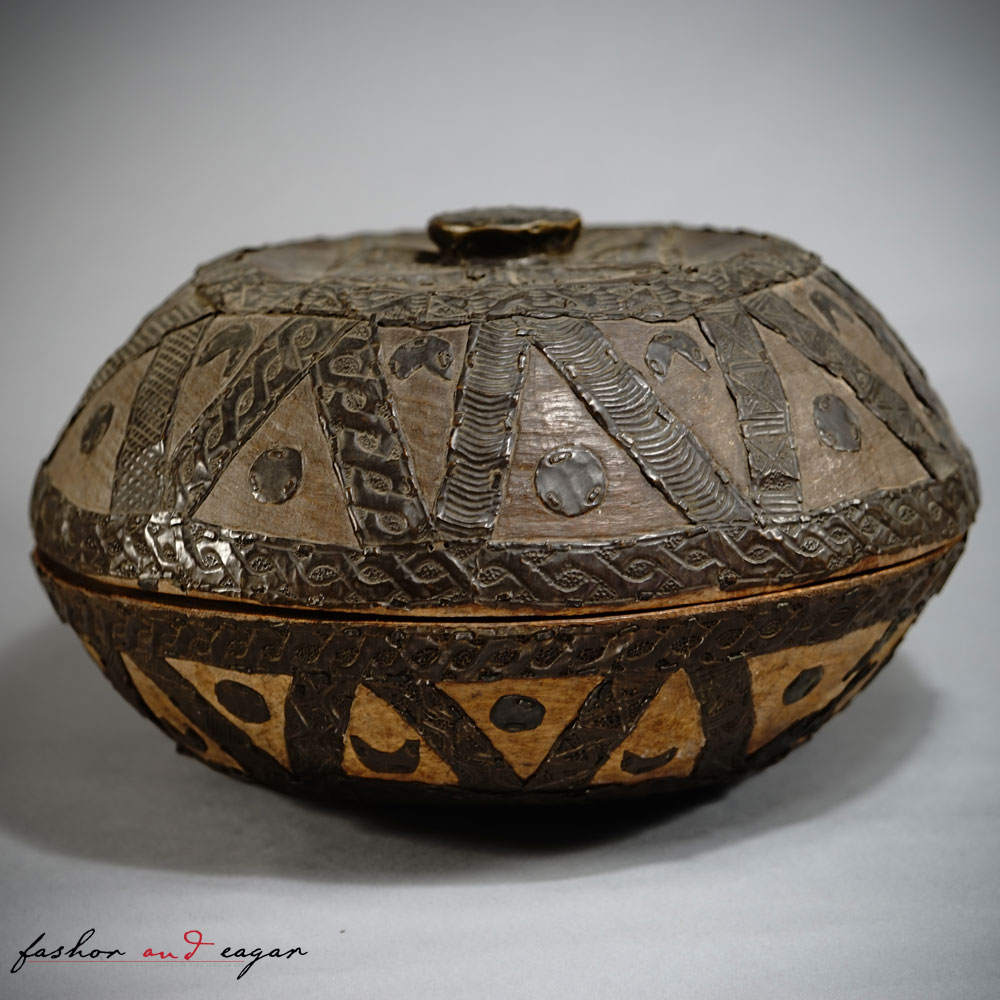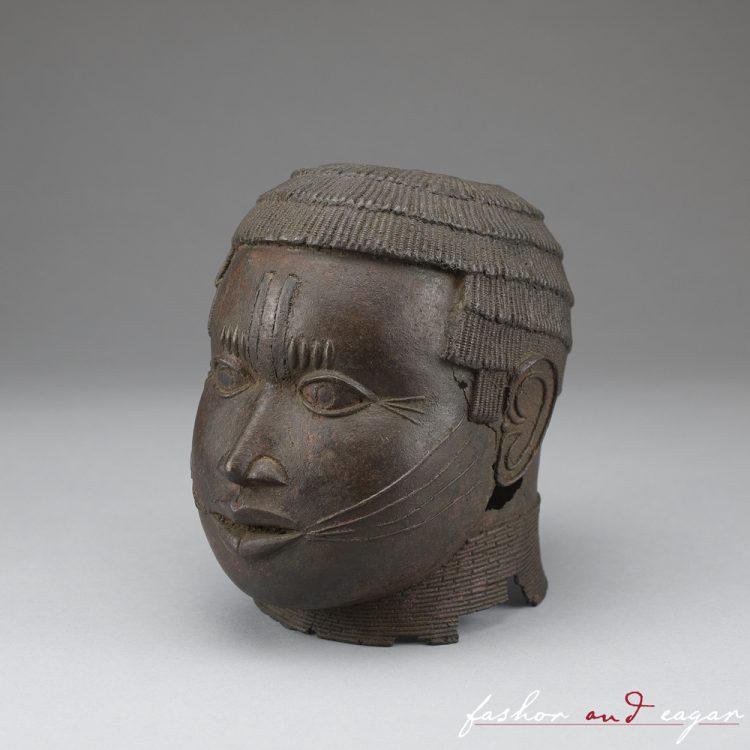
Collection
Benin Queen Mother Iyoba Head
ETHNIC GROUP
Edo
COUNTRY
Republic of Benin, Nigeria
MATERIAL
Bronze.
DIMENTIONS
15.5 inches tall (39.4 cm)
CIRCA
Estimated 17th to 18th Century.
PROVENANCE
Private USA Collection.
EXHIBITED
No known exhibitions
LITERATURE
No known publications
CATALOGUE NOTE
This iconic bronze head of a queen is a commemorative bronze head that depicts Queen Idia, the Queen mother of one of Benin Kingdom’s greatest rulers, Oba Esigie (16th century).
Using the lost wax casting technique, this model of commemorative bronze heads was started in the early sixteenth century and meant to be placed on an altar following Queen Idia’s death. It is a very realistic representation of a young woman from the Benin court, who wears a high pointed ukpe-okhue crown of lattice-shaped red coral beads. The eyes and two bands between them are inset with iron. Above each eyebrow are engraved four cicatrices.
Queen Idia was considered the driving force of her son’s successful military campaigns against neighboring kingdoms. According to Benin history, after Queen Idia’s death, Oba Esigie commissioned dedicatory heads of the queen to be cast and stationed in front of altars in the Queen Mother’s palace. The heads were designed to honor her memory in the history of Benin and mark her military achievements and ceremonial power.
The high degree of craftsmanship in the execution of this work, as in those that typified early Benin bronze works suggests it is of considerable age. The Queen Mothers’ heads went through the same series of stylistic transformation as the kings’ heads.Some art historians suggest with erroneous dis-ingenuity that only four of these queen mother heads exist. What they fail to elaborate on is the fact that only four were probably found in the inventory of the British looting of the Benin palace in 1897. Little surprise, since Queen Mothers were required to set up their own autonomous kingdoms, ergo, palaces, outside of Benin city, to avoid the overlap of influences and a conflict of power with their sons. For example, while the leopard was the animal symbol most commonly associated with the king, the hen (“Eson, Ogoro Madagba” – “the cock that crows at the head of the harem” – which was an honorific title for the Oba’s first wife and thus the mother of the future king) was the symbol most often associated with the Queen Mother and cast bronze images of hens were also placed on her altars.
The British never looted surrounding Benin municipalities, and could therefore hardly account for the state of the Benin art outside Benin City.


